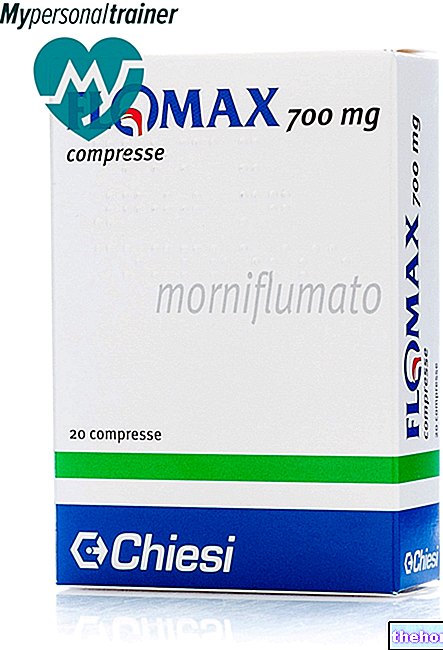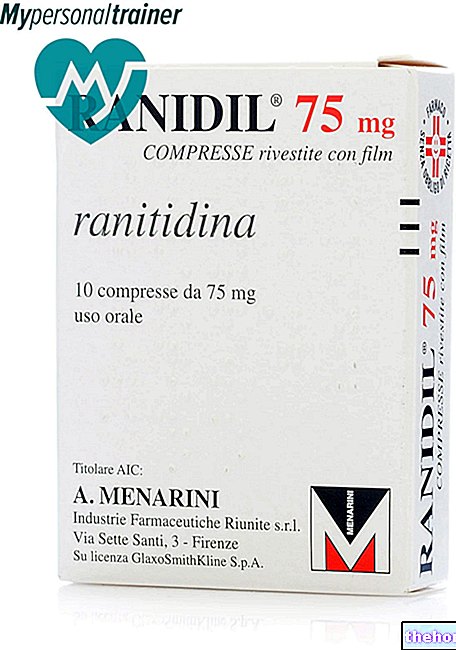Active ingredients: Isoniazid
NICOZID 200mg tablets
Nicozid package inserts are available for pack sizes:- NICOZID 200mg tablets
- NICOZID 100 mg / 2 ml ampoules for intramuscular or topical use, NICOZID 500 mg / 5 ml ampoules for slow infusion
Why is Nicozid used? What is it for?
NICOZID contains the active substance isoniazid which belongs to a group of medicines called antituberculosis that kill a bacterium called Mycobacterium tuberculosis.
NICOZID is indicated, in combination with other medicinal products, especially ethambutol and rifampicin for:
- the treatment of tuberculosis localized in the lungs or spread outside the lungs (tuberculous forms with pulmonary or extrapulmonary localization);
- prevention (prophylaxis) of tuberculosis in subjects at risk (used not in combination).
Contraindications When Nicozid should not be used
Do not use NICOZID
- if you are allergic to isoniazid or any of the other ingredients of this medicine;
- if you have suffered from liver problems caused by medicines (drug-induced liver disease);
- if you have any kind of liver disease (acute liver disease).
Precautions for use What you need to know before taking Nicozid
Talk to your doctor, pharmacist or nurse before using NICOZID.
Use this medicine with caution and tell your doctor in the following cases:
- if you are taking phenylhydantoin, used to treat seizures (See section "Other medicines and NICOZID"), because isoniazid increases the blood levels of phenylhydantoin causing a toxic state characterized by rapid and involuntary movements of the eyes (nystagmus) , loss of coordination of movements (ataxia), excessive sleepiness (lethargy) If your doctor deems it necessary to combine these two medicines, he will prescribe lower doses of phenylhydantoin;
- if you are recovering from surgery, illness or trauma (convalescent patients);
- if you have liver and kidney disease (liver and kidney disease).
Undergo regular (ophthalmological) eye checks before and during treatment with NICOZID, as isoniazid can affect your vision.
In addition, during treatment with NICOZID, your doctor should have you regularly check the functioning of your liver, especially if you are over 35, and will explain the signs that precede the onset of inflammation in the liver (prodromal signs of hepatitis ).
Stop treatment immediately and tell your doctor if you experience any of the following while taking NICOZID:
- mild and temporary impairment of liver function (increased liver transaminases);
- severe inflammation of the liver (severe hepatitis). The risk of developing this disorder is greater in elderly people or people who consume alcoholic beverages daily;
- nausea and vomit;
- loss of appetite (anorexia);
- malaise;
- allergic reactions (hypersensitivity). In this case, if your doctor decides that it is essential to resume treatment, he will prescribe reduced doses and then gradually increase them.
If you take rifampicin, another tuberculosis medicine or other medicines that affect the amount of isoniazid in your blood (enzyme induction) together with NICOZID, you are at increased risk of liver toxic effects (hepatotoxicity). In addition, rifampicin can increase the frequency and severity of blood disorders (secondary haematological reactions).
During treatment with NICOZID you may experience symptoms of "inflammation of the nerves (peripheral neuritis) (See section" Possible side effects "). In this case, your doctor will prescribe a therapy with vitamin B6 (pyridoxine), which is used both for the prevention and treatment of this type of inflammation.
Children
During very early childhood, this medicine should only be administered in case of real need and under the direct supervision of the doctor.
Interactions Which drugs or foods may change the effect of Nicozid
Tell your doctor, pharmacist or nurse if you are using, have recently used or might use any other medicines.
Avoid using NICOZID together with disulfiram, used to treat alcoholism, because when taken together these two medicines can cause coordination and mental disturbances (mental disorders).
Use this medicine with caution and tell your doctor if you are taking the following medicines:
- phenylhydantoin, used to treat seizures, because isoniazid increases blood levels of phenylhydantoin causing a state of toxicity characterized by rapid and involuntary movements of the eyes (eyeballs), loss of coordination of movements, numbness (lethargy) If your doctor deems it necessary to combine these two medicines, he will prescribe reduced doses of phenylhydantoin;
- aluminum hydroxide, used to reduce stomach acid (antacid), because it reduces the effects of isoniazid. Therefore, use NICOZID 1 hour before taking the antacid;
- cycloserine, used to treat infections caused by bacteria; when given together with NICOZID, there may be an increase in side effects affecting the brain (central nervous system).
NICOZID with alcohol
Avoid consuming large amounts of alcohol while taking NICOZID. Alcohol can increase the risk of inflammation of the liver (hepatitis) and nerves (neuropathies).
Warnings It is important to know that:
Pregnancy and breastfeeding
If you are pregnant, think you may be pregnant or are planning to have a baby or are breast-feeding, ask your doctor, pharmacist or nurse for advice before using this medicine. If you are pregnant or breast-feeding. breast, use NICOZID only if clearly needed and under the direct supervision of your doctor.
Driving and using machines
This medicine does not affect the ability to drive or use machines.
Dose, Method and Time of Administration How to use Nicozid: Posology
Always use this medicine exactly as your doctor, pharmacist or nurse has told you. If in doubt, ask your doctor, pharmacist or nurse.
The dose varies according to the type of treatment (therapeutic scheme):
- Daily treatment: the recommended dose is 5-10 mg per kg of body weight per day orally, by injection into muscle (intramuscular) or vein (intravenous) divided into 1-2 administrations in the initial phase of treatment.
- Intermittent treatment: the recommended dose is 10 mg per kg of body weight per day. Your doctor may adjust the dose according to the interval between doses and other medicines used with NICOZID. If the medicine is to be given by injection into the spine (intrathecal), the recommended dose is 25-50 mg per day. ; if the medicine is to be given by injection into the lungs (instillations into the pleural cavity), the recommended dose is 50-250 mg per day.
Use in children
The recommended dose is 6-10-20 mg per kg of body weight per day up to a maximum of 500 mg per day in older children. In particular, if the medicine is to be given by injection into the spine (intrathecal), the recommended dose is 10-20 mg per day.
Use in people with kidney problems or on hemodialysis
If you suffer from kidney problems (renal insufficiency) there is no need to reduce the dose. If you have severe kidney problems (glomerular filtration less than 10ml / min), your doctor should reduce the dose of medicine to be given (66-75% of the normal dose). If you are undergoing mechanical filtration of your blood (hemodialysis, peritoneal dialysis), your doctor should prescribe an additional dose of NICOZID.
Use in people with liver problems
If you have liver problems (liver failure), your doctor will need to reduce the dose of NICOZID to avoid the toxic effects of the medicine.
If you forget to use NICOZID
Do not use a double dose to make up for a forgotten dose. If you have any further questions on the use of this medicine, ask your doctor, pharmacist or nurse immediately.
Overdose What to do if you have taken an overdose of Nicozid
Following the administration of an overdose of this medicine, nausea, vomiting, dizziness, problems with vision (disturbed vision) and speech can occur within a short time (30 minutes - 3 hours). In severe cases, convulsions, breathing problems (respiratory depression), altered state of consciousness with rapid transition from stupor to coma, increased acidity of the blood (metabolic acidosis), alteration of some results of urinalysis (acetonuria) may appear ), increased blood sugar levels (hyperglycaemia).
Your doctor will decide which therapy is best for you based on the severity of your symptoms.
In case of accidental ingestion / intake of an overdose of NICOZID, notify your doctor immediately or go to the nearest hospital.
Side Effects What are the side effects of Nicozid
Like all medicines, this medicine can cause side effects, although not everybody gets them.
The following side effects may occur:
Frequency not known (the frequency of which cannot be estimated from the available data):
- inflammation of the nerves preceded by numbness, tingling, sensitivity to contact or weakness in the arms and legs (peripheral neuropathies preceded by paresthetic disorders in the extremities), especially in people who do not eat properly (malnourished), who are predisposed to consume large quantities alcoholics (alcoholics) or suffering from diabetes (diabetics);
- inflammation and alteration of the optic nerve (neuritis and optic atrophy);
- seizures, excess activity (hyperactivity), euphoria, inability to sleep (insomnia), mental problems (toxic psychosis) with mania (manic fits) and delusions;
- nausea, vomiting, impaired liver function (increased liver transaminases) and the results of certain blood tests (hyperbilirubinaemia) and urine (bilirubinuria);
- decrease in the number of red blood cells (haemolytic anemia, aplastic anemia), white blood cells (agranulocytosis) and platelets (thrombocytopenia) in the blood, increase in the number of a type of white blood cell in the blood (eosinophilia);
- symptoms caused by the deficiency of some vitamins (vitamins B6 and PP), increased blood sugar levels (hyperglycaemia), increased blood acidity (acidosis);
- fever, skin irritations (morbilliform, maculo-papular, exfoliative rashes), inflammation of the lymph nodes (lymphadenitis), inflammation of the blood vessels (vasculitis);
- joint inflammation and pain (rheumatoid syndrome), symptoms similar to those of a severe inflammatory skin disease (lupus erythematosus-like syndrome);
- irritation at the injection site (inoculation), when administered by injection into muscle (intramuscular).
Reporting of side effects
If you get any side effects, talk to your doctor or pharmacist. This includes any possible side effects not listed in this leaflet. You can also report side effects directly via the national reporting system at www.agenziafarmaco.it/it/responsabili. By reporting side effects you can help provide more information on the safety of this medicine.
Expiry and Retention
Keep this medicine out of the sight and reach of children.
Do not use this medicine after the expiry date which is stated on the package after "EXP". The expiry date refers to the last day of that month.
Do not throw any medicines via wastewater or household waste. Ask your pharmacist how to throw away medicines you no longer use. This will help protect the environment.
Other information
What NICOZID contains
- The active ingredient is isoniazid. Each tablet contains 200 mg of isoniazid.
- The other ingredients are: corn starch, talc, sodium carboxymethylcellulose, magnesium stearate.
What NICOZID looks like and contents of the pack
Box of 50 tablets of 200 mg.
Source Package Leaflet: AIFA (Italian Medicines Agency). Content published in January 2016. The information present may not be up-to-date.
To have access to the most up-to-date version, it is advisable to access the AIFA (Italian Medicines Agency) website. Disclaimer and useful information.
01.0 NAME OF THE MEDICINAL PRODUCT
NICOZID
02.0 QUALITATIVE AND QUANTITATIVE COMPOSITION
One tablet contains: isoniazid 0.2 g.
Excipients: polyvinylpyrrolidone K30; pregelatinised maize starch; croscarmellulose sodium; magnesium stearate, silica (anhydrous).
A 100mg / 2ml vial contains: 100mg isoniazid; water for injections.
A 500mg / 5ml vial contains: 500mg isoniazid; water for injections.
03.0 PHARMACEUTICAL FORM
- Tablets
- 100 mg / 2 ml ampoules for intramuscular or topical use
- 500 mg / 5 ml ampoules for slow infusion.
04.0 CLINICAL INFORMATION
04.1 Therapeutic indications
"Isoniazid is a" first line "antituberculosis. It is used in combination with other antituberculosis drugs, especially with ethambutol and rifampicin: these three drugs are recognized as having the highest therapeutic index.
It is used for the treatment of tuberculous forms with pulmonary and extrapulmonary localization (first treatment and subsequent treatments). It is also used in high-risk subjects for tuberculosis prophylaxis.
04.2 Posology and method of administration
The doses of isoniazid vary according to whether the daily or intermittent therapeutic scheme is adopted.
Adults
• Daily treatment
5-10 mg / kg / day orally, by i.m. and via i.v. in 1-2 administrations in the initial treatment period
• Intermittent treatment
About 10 mg / kg, a dose that is modified according to the interval between administrations and the number of associated drugs.
• Intrathecally: 25-50 mg / day
• For instillations in the pleural cavity: 50-250 mg / day
Children
6-10-20 mg / kg / day, up to a maximum of 500 mg / day (in the older child).
• Intrathecally: 10-20 mg / day
Adjustment of posology
It does not seem necessary to reduce the dosage of the drug in case of renal insufficiency. If glomerular filtration is less than 10 ml / min administer 66-75% of a normal dose.
In the case of hepatic insufficiency, however, it is often advisable to reduce the dose of isoniazid to avoid toxic phenomena.
After hemodialysis or peritoneal dialysis administer an additional dose of the drug.
04.3 Contraindications
Known hypersensitivity to isoniazid, history of drug-induced liver disease, acute liver disease of any nature.
04.4 Special warnings and appropriate precautions for use
Peripheral neurites that could occur during isoniazid therapy must be treated with Vit. B6 (pyridoxine); doses of 50 to 100 mg of pyridoxine per day are normally used for prophylaxis; obviously higher doses are necessary if the neuritis is already in progress.
Although a slight and transient increase in hepatic transaminases is possible with the use of isoniazid in a number of treated patients (10-20%), cases of severe hepatitis and nausea, vomiting, anorexia and malaise have been reported. the treatment must be stopped immediately.
The risk of hepatitis is correlated with age and increases in subjects who drink alcohol daily. Therefore, during therapy it is necessary, especially in subjects over 35 years of age, to perform regular checks of liver function, also warning patients about the prodromal signs of hepatitis so that they are promptly reported to the doctor.
The hepatotoxicity of isoniazid can be enhanced by rifampicin or other substances that cause enzyme induction.
The frequency and severity of secondary haematological reactions may also be increased by the simultaneous use of rifampicin.
The suspension of the therapy is necessary when hypersensitivity reactions occur; the possible restart of the drug must take place, if necessary, with the use of initially reduced and progressively increasing doses.
Isoniazid inhibits the hepatic metabolism of phenylhydantoin; the increase in blood levels of the latter can lead to a toxic state with nystagmus, ataxia and lethargy.
The association of the two drugs must therefore be made only if necessary and by suitably reducing the dosage of phenylhydantoin.
Taking into account the pharmacological characteristics of isoniazid, its use must be carried out with due care in subjects with diseases, in convalescents or with liver and kidney diseases.
As visual changes are possible, ophthalmological checks are necessary before and during therapy with isoniazid.
04.5 Interactions with other medicinal products and other forms of interaction
Isoniazid inhibits the hepatic metabolism of phenylhydantoin; the increase in blood levels of the latter can lead to a toxic state with rapid and involuntary movements of the eyeballs, lack of muscle coordination and a state of numbness. The association of the two Medicines should therefore be made only if necessary and by appropriately reducing the dosage of phenylhydantoin.
Aluminum hydroxide (antacid) reduces intestinal absorption of isoniazid, which must be administered at least one hour earlier than the antacid.
The concomitant administration of isoniazid and disulfiram can cause coordination disturbances and mental disturbances. The association of the two substances must therefore be avoided.
Potentiation phenomena between isoniazid and cycloserine on the central nervous system have been described.
Therefore this association must be used with great caution.
04.6 Pregnancy and breastfeeding
In pregnant women and in very early childhood, the product should be administered only in case of real need and under the direct supervision of the doctor.
04.7 Effects on ability to drive and use machines
Nobody.
04.8 Undesirable effects
Neuropsychics: peripheral neuropathies preceded by paresthetic disorders of the extremities, especially in malnourished or predisposed subjects (alcoholics, diabetics, etc.); neuritis and optic atrophy; convulsions, hyperactivity, euphoria, insomnia, toxic psychosis with manic fits and delusions.
Hepatic: nausea, vomiting, increased transaminases, hyperbilirubinemia, bilirubinuria.
Haematological: haemolytic anemia, eosinophilia, agranulocytosis, thrombocytopenia, aplastic anemia.
Metabolic: Vitamin Deficiency Symptoms. B6 and PP; hyperglycemia, acidosis.
Hypersensitivity reactions: fever, skin rashes (morbilliform, maculo-papular, exfoliative), lymphadenitis, vasculitis.
Other reactions: rheumatoid syndrome and lupus erythematosus-like syndrome.
Local Effects: IM injection may be followed by irritation at the injection site.
04.9 Overdose
Symptoms of acute intoxication can occur within 30 minutes - 3 hours of ingestion of the drug and are characterized by nausea, vomiting, dizziness, and disturbances in vision and speech.
In case of severe overdose, convulsions, respiratory depression, altered state of consciousness with rapid evolution from stupor to coma, metabolic acidosis, acetonuria, hyperglycemia may appear.
The treatment of overdose consists in inducing vomiting, gastric lavage following intubation, in the correction of acidosis by means of sodium bicarbonate, in the administration of anticonvulsants intravenously and with the intravenous injection of doses of pyridoxine equal to 1 g of pyridoxine for each gram of isoniazid estimated to have been ingested.
05.0 PHARMACOLOGICAL PROPERTIES
05.1 Pharmacodynamic properties
The antibacterial spectrum of isoniazid is extremely narrow: it only includes Mycobacterium tuberculosis; isoniazid is not active even on atypical mycobacteria (with some exceptions for M. kansasii).
Its action is very powerful: in fact the CMI, which also corresponds to the minimum bactericidal concentration, is, for sensitive strains, of the order of 0.05 - 0.1 mcg / ml.
It acts on growing cells and is active on intra and extracellular mycobacteria.
Resistence
Resistance develops rapidly in vitro and in vivo through the selection of resistant mutants. There is no cross-resistance with other antituberculosis drugs. In the clinic, its use in combination with other antituberculosis delays, even eliminating it, the emergence of resistance.
The mechanism of action of isoniazid is not known; however, several hypotheses have been formulated. Among the most accredited is that of a "primary inhibition of the synthesis of mycolic acids, important constituents of the mycobacterium wall.
Since mycolic acids are found only in mycobacterium, this action would explain the high selectivity of the antimicrobial activity of isoniazid. Exposure to isoniazid leads to loss of acid-resistance and a decrease in the quantity of lipids extractable with methanol from microorganisms.
05.2 Pharmacokinetic properties
It can be administered both orally (most commonly used) and parenterally (i.m. and i.v.) Half-life: 0.5-1 hour in rapid acetylators; About 2 hours (and more) in slow acetylators (see below).
Whey protein binding: it is not appreciably linked to whey proteins.
It is rapidly and completely absorbed whether it is administered orally or parenterally and is evenly distributed throughout the body, including the cerebrospinal fluid, where concentrations up to 90% of those in serum are reached.
Since parenteral administration is used only in special cases, there are no pharmacokinetic data relating to this route of administration in the literature. However, given the high bioavailability of the drug, it is believed that the blood levels reached with oral and parenteral administration are almost overlapping.
The pharmacokinetic behavior of isoniazid is peculiar: with regard to elimination, in fact, there is a bimodal behavior linked to the ability of acetylation, which is genetically determined.
On the basis of their ability to acetylate isoniazid, individuals have been divided into two categories: that of slow acetylators and that of fast acetylators. The latter acetylate isoniazid at a rate 5-6 times faster than that of slow inactivators. In the plasma of a slow acetylator, the concentration of isoniazid at 3 hours after administration is on average 5.8 mcg / ml and that of acetylisoniazid is 1.8 mcg / ml.
These values in rapid acetylators are 2.1 and 4.3 mcg / ml, respectively. Among the Japanese and the Eskimos, slow acetylators represent about 10%, while among the Negroes and Caucasians they are about 60%.
Isoniazid is metabolised in the liver: it is acetylated with the formation of acetylisoniazid and, to a lesser extent, isonicotinic acid and other derivatives.
Approximately 75-95% of a dose is excreted in the urine over 24 hours as inactive metabolites.
Clearance of isoniazid depends only to a small extent on the condition of renal function, but patients who are slow inactivators of the drug may accumulate toxic concentrations if their renal function is impaired.
According to some AA, 300 mg per day of the drug can be safely administered to individuals whose blood creatinine concentration is less than 12 mg / dl.
05.3 Preclinical safety data
The LD50 of isoniazid in mice is 151 mg / kg intraperitoneally and 149 mg / kg intravenously.
06.0 PHARMACEUTICAL INFORMATION
06.1 Excipients
Tablets: starch, talc, sodium carboxymethylcellulose, magnesium stearate.
Ampoules: water for injections.
06.2 Incompatibility
None.
06.3 Period of validity
In intact packaging, properly stored.
- Tablets: 5 years.
- Vials: 5 years.
06.4 Special precautions for storage
No special storage precautions.
06.5 Nature of the immediate packaging and contents of the package
Tablets: 2 PVC / aluminum blisters of 25 tablets each.
50 tablets 200 mg
Vials: yellow glass vials.
6 vials of 100 mg / 2ml
5 ampoules of 500 mg / 5ml
06.6 Instructions for use and handling
= =
07.0 MARKETING AUTHORIZATION HOLDER
PIAM FARMACEUTICI S.p.A. - Via Padre G. Semeria, 5 - 16131 - GENOA
08.0 MARKETING AUTHORIZATION NUMBER
50 tablets 200 mg Code AIC 006455036
6 vials 100mg / 2ml Cod. AIC 006455048
5 vials 500mg / 5ml Cod. AIC 006455051
09.0 DATE OF FIRST AUTHORIZATION OR RENEWAL OF THE AUTHORIZATION
01.06.2005
10.0 DATE OF REVISION OF THE TEXT
06.10.2007




























